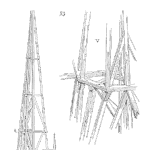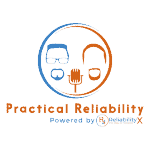
Car Reliability Exceptions Declared by Manufacturer
Abstract
Kirk and Fred discussing his purchase of a new car and the manufacturers environmental condition as declared in the owners manual.
ᐅ Play Episode
Your Reliability Engineering Professional Development Site

Kirk and Fred discussing his purchase of a new car and the manufacturers environmental condition as declared in the owners manual.
ᐅ Play Episode
by Carl S. Carlson Leave a Comment

Carl and Fred continue discussing the subject of teaching reliability. This episode builds on SOR 390 Reliability Engineers as Good Teachers.
ᐅ Play Episode
by James Kovacevic Leave a Comment

Failures codes help the reliability engineers to make intelligent business decisions regarding the issues with the assets. It is a formula that helps you understand how an asset fails and how can you gather the needed data to mitigate a failure? A good failure code contains a hierarchy of the problem towards a suitable solution. The best practice to devise a failure code would be to break it into a sequence of Part, Problem, and Cause. In short, failure codes help you describe and understand the problem based on the failure data, and you can trend that data to prevent those failures in the future.
In this episode, we covered:
by Robert Kalwarowsky Leave a Comment

On this week’s show, I welcome on Rajiv Anand, the founder and CEO of Quartic.AI. During this episode, Rajiv explains different types of projects where AI would be a good solution, how much data we need to get started and answers some other listener questions.
If you have any questions, business inquiries or if you’d like to appear on the podcast, email me at robsreliabilityproject@gmail.com
Check out Quartic.ai – www.quartic.ai
Follow Quartic.ai on LinkedIn – https://www.linkedin.com/company/quartic.ai/
Follow Rob’s Reliability Project on LinkedIn – https://www.linkedin.com/company/robsreliabilityproject/
Follow Rob’s Reliability Project on Facebook – https://www.facebook.com/robsreliabilityproject/
by Carl S. Carlson Leave a Comment

Carl and Fred discussing some of the finer points of teaching the subject of reliability.
ᐅ Play Episode
by James Kovacevic Leave a Comment

Ultrasound is a great tool but using it to monitor your equipment needs resources and time. When you install sensors for data capturing, there are a lot of values that come up. That much amount of data can overwhelm your engineers. That’s why it is better to have an online monitoring solution that can do that job for you. One of such tools is ‘Forecast’ designed by UE systems. All you have to do is plug the device to the critical equipment, put the sensors at various vulnerable points, and you have a got a wired online monitoring system for you.
ᐅ Play Episode
by George Williams Leave a Comment

Tonight we continue our series on Planning. Our discussion is on Job Plans. Tune in, download, and subscribe! [Read more…]
by Adam Bahret Leave a Comment

Adam and Fred discussing how observations in design limitations may be used for adapting methods of product functionality.
ᐅ Play Episode
by James Kovacevic Leave a Comment

This episode is about the learning and value that conferences hold. In SMRP 2018 conference, there were a lot of companies that participated along with their workers so that they learn something new. This yearly conference is a great opportunity for people who are struggling with different things in reliability and maintenance programs. There are presentations, workshops, and discussions all around from where you can learn to change reliability practices, improve, and sustain the process for a long term. There are a lot of new engineers or trainees who are looking for a field that would help them or catch their interest.
ᐅ Play Episode
by James Kovacevic Leave a Comment

Extraordinary Reliability Engineers always have some habits that differentiate them from the rest. One of these habits is that they identify the problem and really make sure that they understand it before they continue working towards its solution. A successful reliability engineer doesn’t just rely on the failure data, he actually analysis the problem, understands it, takes feedback from different people, and then deploy resources to fix that problem. When you really know what’s going on with your assets, only then you can hope to come up with a good solution that will stop that problem to occur repeatedly.
In this episode, we covered:
by Robert Kalwarowsky Leave a Comment

On this week’s episode, I welcome on Adam McElhinney. Adam is the Chief of Machine Learning and AI Strategy from Uptake and, in his spare time, he teaches computer science and math at the Illinois Institute of Technology. During this episode, Adam introduces us to machine learning, artificial intelligence, data science, deep learning and gives us some tips on how to implement this technology at our site.
If you have any questions, business inquiries or if you’d like to appear on the podcast, email me at robsreliabilityproject@gmail.com
Check out Uptake – https://www.uptake.com/
Follow Adam McElhinney on LinkedIn – https://www.linkedin.com/in/adam-mcelhinney-3149965/
Follow Rob’s Reliability Project on LinkedIn – https://www.linkedin.com/company/robsreliabilityproject/
Follow Rob’s Reliability Project on Facebook – https://www.facebook.com/robsreliabilityproject/
by James Kovacevic Leave a Comment

Condition-based monitoring is one of the best ways to proactively approach the solution to the problems. When you are looking at the equipment for expected failures, it is very important to check the power conditions. There are a lot of failures that can be captured ahead of time if you have the power quality checks in place. When we talk about Power monitoring, the maintenance managers have to look for voltage spikes, current flow, and thermal changes in the operating environment of the equipment. This can be done by using thermal sensors but there are specific solutions for doing it in efficient ways.
ᐅ Play Episode
by Adam Bahret Leave a Comment

Adam and Fred discussing how constraints n product development and use drive great design.
ᐅ Play Episode
by George Williams Leave a Comment

Today we begin our series on Planning and Scheduling. We discuss “What is Planning?” and what some of the value drivers are. [Read more…]
by Adam Bahret Leave a Comment
 Ask a question or send along a comment.
Please login to view and use the contact form.
Ask a question or send along a comment.
Please login to view and use the contact form.